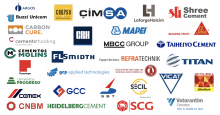
The concrete and cement industry, which has cut emissions proportionally by 20% since 1990, is now assembling wider support to achieve its ambitious 2050 carbon neutral target.
The partners say the Concrete Action for Climate initiative, which already represents 40% of the global concrete and cement industry through the GCCA, will bring together expertise and influence from the wider built environment industry, business, civil society, governments, and investors to help deliver and co-ordinate global climate action, stimulate demand for sustainable materials and ensure appropriate financing and public policy is in place to help the sector reduce its carbon footprint.
Dr. Dominik von Achten, chairman of CAC and chairman of the managing board of HeidelbergCement, commented: “Concrete is vital to the development of the modern world, being used to develop key infrastructure like safe homes, bridges, hospitals as well as supporting the transition to clean energy. Strong action to improve the sustainability of cement and concrete is already underway, but the industry needs to engage and collaborate with others to help drive collective action towards achieving carbon neutral concrete for the world."
He added that the launch of the Concrete Action for Climate platform is an example of such collective action.
The work of the Concrete Action for Climate forms part of the Mission Possible Partnership (MPP) and will follow a four-step approach, bringing together ambitious industry stakeholders to forge a shared vision for the future of concrete.
Alongside CAC, GCCA members are working on a comprehensive roadmap which will outline the pathway to net-zero with measurable milestones and a shared commitment to agreed actions. CAC will also be supporting implementation through the development of practical resources and toolkits for actions to share best practice with concrete and cement companies globally.
GCCA chief executive Dinah McLeod said that concrete is vital to the modern world and ensuring its long-term sustainability is essential.
"This cannot be done by industry alone, we need collaboration across the entire value chain, through policy, investment, and by working with policymakers as well as other industries," she added.
“Through Concrete Action for Climate, we intend to build on the commitments of our industry and create lasting change – reducing the climate impacts of concrete whilst ensuring its incredible performance benefits can help build the sustainable world of tomorrow.”
Anthony Hobley, co-executive director, mission possible platform & executive fellow at World Economic Forum, said: “By partnering with the cement and concrete industry to reduce its carbon footprint, we are taking another crucial step towards achieving a net-zero word by 2050."
Hobley said the CAC will work across the built environment value chain to create demand for green and low carbon cement and concrete, while also ensuring that the finance and policy is in place to drive innovation and a lasting change to how the industry operates.










